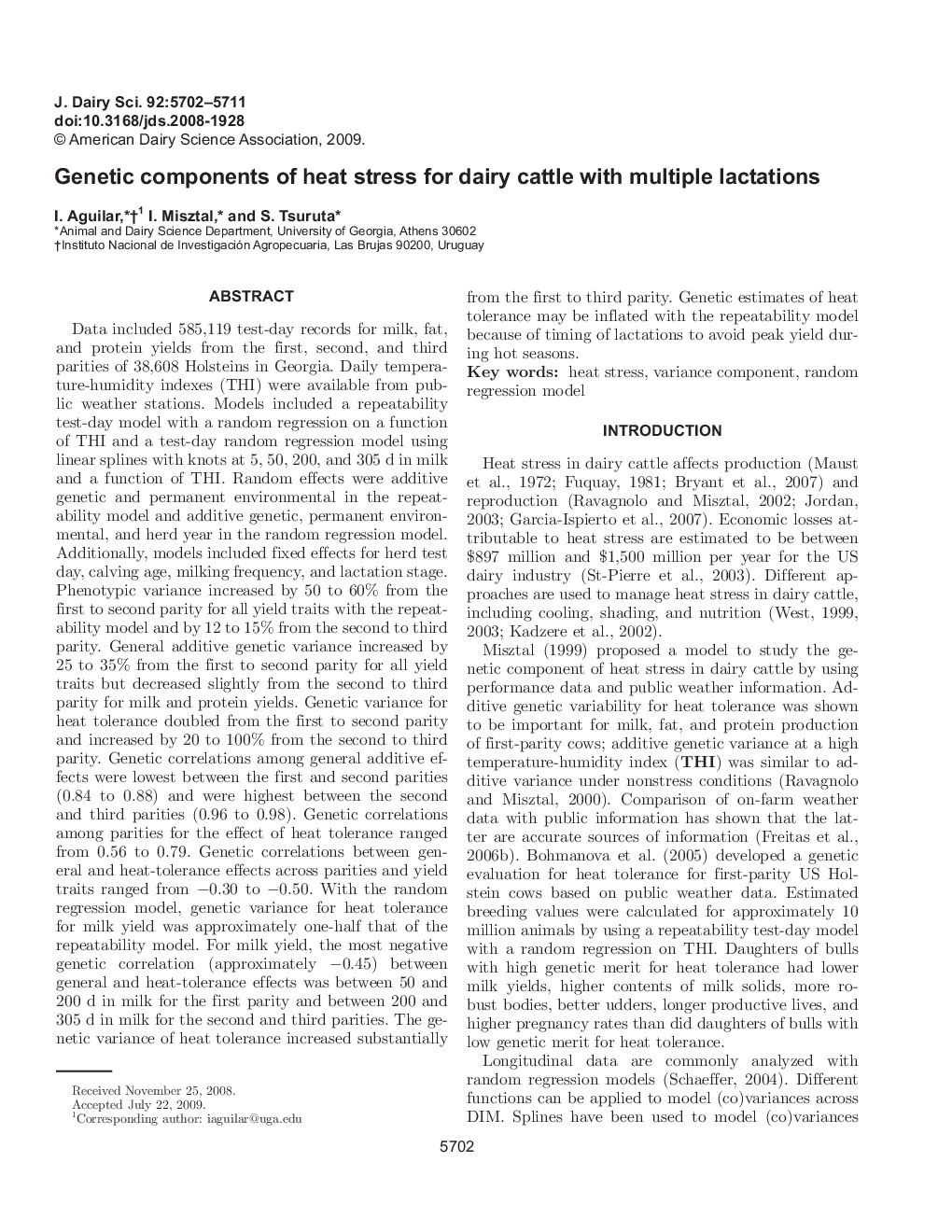| کد مقاله | کد نشریه | سال انتشار | مقاله انگلیسی | نسخه تمام متن |
|---|---|---|---|---|
| 2439133 | 1108087 | 2009 | 10 صفحه PDF | دانلود رایگان |
عنوان انگلیسی مقاله ISI
Genetic components of heat stress for dairy cattle with multiple lactations
دانلود مقاله + سفارش ترجمه
دانلود مقاله ISI انگلیسی
رایگان برای ایرانیان
کلمات کلیدی
موضوعات مرتبط
علوم زیستی و بیوفناوری
علوم کشاورزی و بیولوژیک
علوم دامی و جانورشناسی
پیش نمایش صفحه اول مقاله

چکیده انگلیسی
Data included 585,119 test-day records for milk, fat, and protein yields from the first, second, and third parities of 38,608 Holsteins in Georgia. Daily temperature-humidity indexes (THI) were available from public weather stations. Models included a repeatability test-day model with a random regression on a function of THI and a test-day random regression model using linear splines with knots at 5, 50, 200, and 305 d in milk and a function of THI. Random effects were additive genetic and permanent environmental in the repeatability model and additive genetic, permanent environmental, and herd year in the random regression model. Additionally, models included fixed effects for herd test day, calving age, milking frequency, and lactation stage. Phenotypic variance increased by 50 to 60% from the first to second parity for all yield traits with the repeatability model and by 12 to 15% from the second to third parity. General additive genetic variance increased by 25 to 35% from the first to second parity for all yield traits but decreased slightly from the second to third parity for milk and protein yields. Genetic variance for heat tolerance doubled from the first to second parity and increased by 20 to 100% from the second to third parity. Genetic correlations among general additive effects were lowest between the first and second parities (0.84 to 0.88) and were highest between the second and third parities (0.96 to 0.98). Genetic correlations among parities for the effect of heat tolerance ranged from 0.56 to 0.79. Genetic correlations between general and heat-tolerance effects across parities and yield traits ranged from â0.30 to â0.50. With the random regression model, genetic variance for heat tolerance for milk yield was approximately one-half that of the repeatability model. For milk yield, the most negative genetic correlation (approximately â0.45) between general and heat-tolerance effects was between 50 and 200 d in milk for the first parity and between 200 and 305 d in milk for the second and third parities. The genetic variance of heat tolerance increased substantially from the first to third parity. Genetic estimates of heat tolerance may be inflated with the repeatability model because of timing of lactations to avoid peak yield during hot seasons.
ناشر
Database: Elsevier - ScienceDirect (ساینس دایرکت)
Journal: Journal of Dairy Science - Volume 92, Issue 11, November 2009, Pages 5702-5711
Journal: Journal of Dairy Science - Volume 92, Issue 11, November 2009, Pages 5702-5711
نویسندگان
I. Aguilar, I. Misztal, S. Tsuruta,